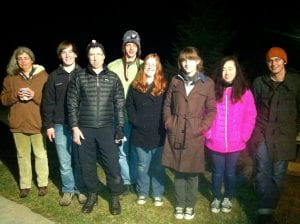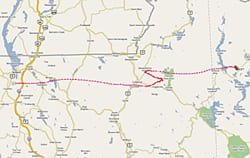Overview
 GreenCube is a student-run project in the Lynch Rocket Lab at Dartmouth College overseen by Professor Kristina Lynch. A GreenCube is a sensor craft that can carry up to six scientific instruments as long as they have a 0 – 5 volt analog output. Furthermore, each GreenCube has a three axis magnetometer, GPS, and radio system for relaying position and orientation relative to the Earth’s magnetic field. The GreenCube’s design is inpired by the standard set by CalPoly and Stanford Universities. A typical CalPoly cubesat is a 10 cm x 10 cm x 10 cm cube containing all the electronics, and scientific instruments. The Dartmouth GreenCube uses a 30 cm x 10 cm x 10 cm encasing allowing more room for electronics and instruments. The GreenCube can be flown to 90,000 – 110,000 feet via sounding balloon, and is currently being modified to be launched into space on a sounding rocket.
GreenCube is a student-run project in the Lynch Rocket Lab at Dartmouth College overseen by Professor Kristina Lynch. A GreenCube is a sensor craft that can carry up to six scientific instruments as long as they have a 0 – 5 volt analog output. Furthermore, each GreenCube has a three axis magnetometer, GPS, and radio system for relaying position and orientation relative to the Earth’s magnetic field. The GreenCube’s design is inpired by the standard set by CalPoly and Stanford Universities. A typical CalPoly cubesat is a 10 cm x 10 cm x 10 cm cube containing all the electronics, and scientific instruments. The Dartmouth GreenCube uses a 30 cm x 10 cm x 10 cm encasing allowing more room for electronics and instruments. The GreenCube can be flown to 90,000 – 110,000 feet via sounding balloon, and is currently being modified to be launched into space on a sounding rocket.
GreenCube Future
As of now the GreenCube has a two fold future path. Phillip Bracikowski is working on adjusting the GreenCube design such that it will fit on a P-Pod deployer, which is a mechanism that allows GreenCube-sized objects be cheaply deployed into space from rockets. This requires overcoming several obstacles however. First the GreenCube’s outer shell must be redesigned to fit in a P-Pod deployer, which in turn will affect the inside volume available for electronics and instrumentation. Also, the GreenCube team must figure out how to communicate with the payload without using amateur radio frequencies as is currently performed, as these will not be available on a rocket-launched flight. Once these bridges are crossed however, Prof. Lynch would like to use several GreenCubes to take plasma density irregularity measurements in the k-spectrum during an auroral event on sounding rocket missions. Furthermore, Professor Robyn Millan of Dartmouth College, who is also collaborating on the project, would like to implement the GreenCubes in orbital missions.
The other path GreenCube is taking is more balloon flights, particularly regarding the task of learning how to communicate between multiple, simultaneously flying payloads.
GreenCube 4
Greencube 4 is our first foray into using the open source Arduino platform as a control board, replacing our previous house-built K111. The new control board will allow us to build wireless sensor networks out of our payloads and to to transmit both sensor and GPS data using a single radio. We have also created a prototype solar panel, whose behavior we will monitor throughout the mission. The data will allow us to evaluate the panel’s performance in cold temperatures. This is a first step towards using similar panels as a power source for future missions. Greencube 4 also supports the continued development of ALTAIR, a spinoff of Greencube 3. ALTAIR launched on September 2, 2011 to conduct a test of flight systems, including telemetry, communications, GPS, tracking, and cutdown. The launch of Greencube 4 is pending, planned for early spring 2012.
GreenCube 3A
–Data
GreenCube 3A Data:
The balloon’s flight prediction.
Picture of the flight team.
GPS Data. Right click to download. Must be opened in Microsoft Excel.
iPhone Data. Right click to download. Must be opened in Microsoft Excel.
3-D model of the balloon’s flight path. Must be opened in Google Earth. GreenCube 3 Flight path
A summaryof the telescope component of GC3A.
Launched on the morning of May 1, 2011, GreenCube “3A” was an extension of GreenCube 3’s experiment, but was essentially a test flight for determining our relative capability to track the payload with a telescope, among other objectives. The payload also included an iPhone taking data over duration of the flight, which can be viewed under the “Data” link above.
GreenCube 3
–Data
Data from our summer 2010 launch! “Fred” is the payload with new equipment – an accelerometer, new radio system, and the LEDs. “Henry” is the one identical to those from GreenCube 2.
GPS Plots
 |
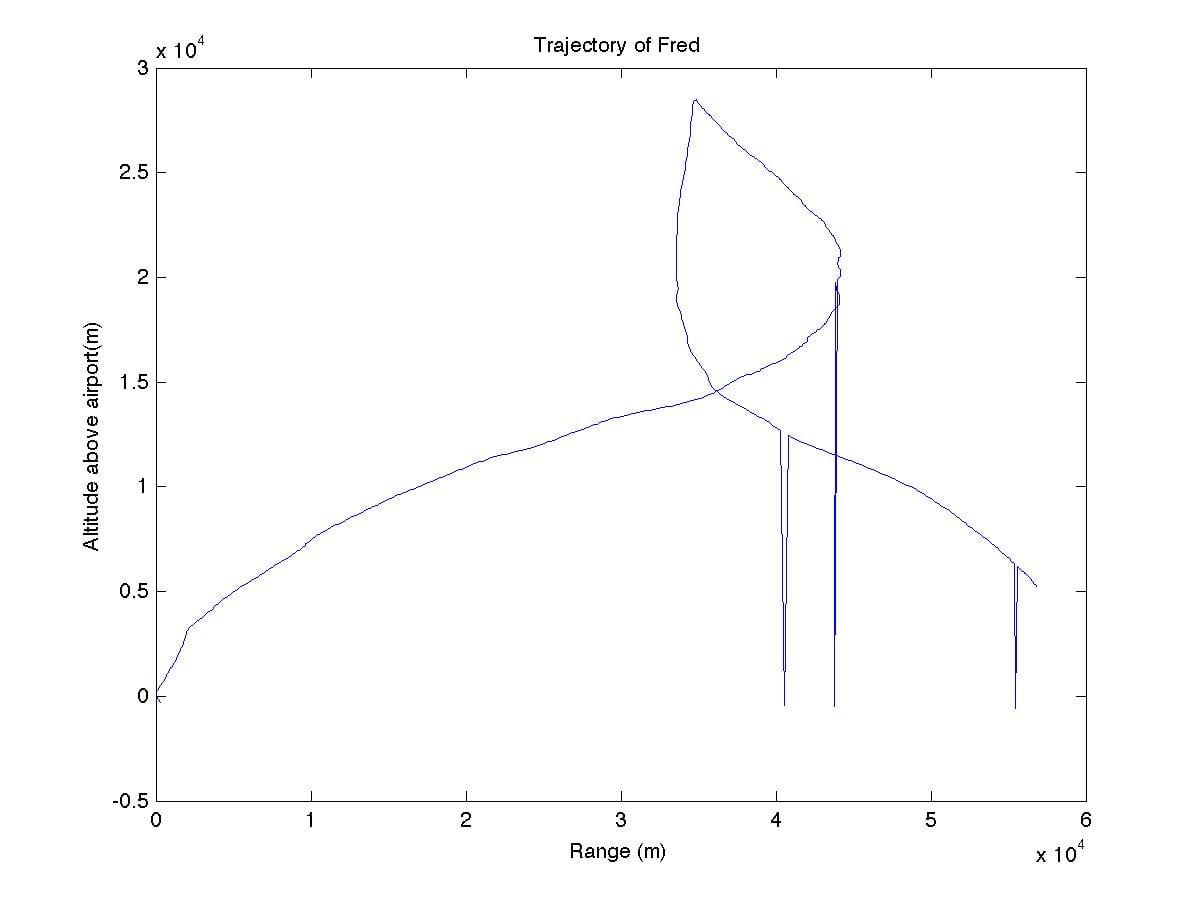 |
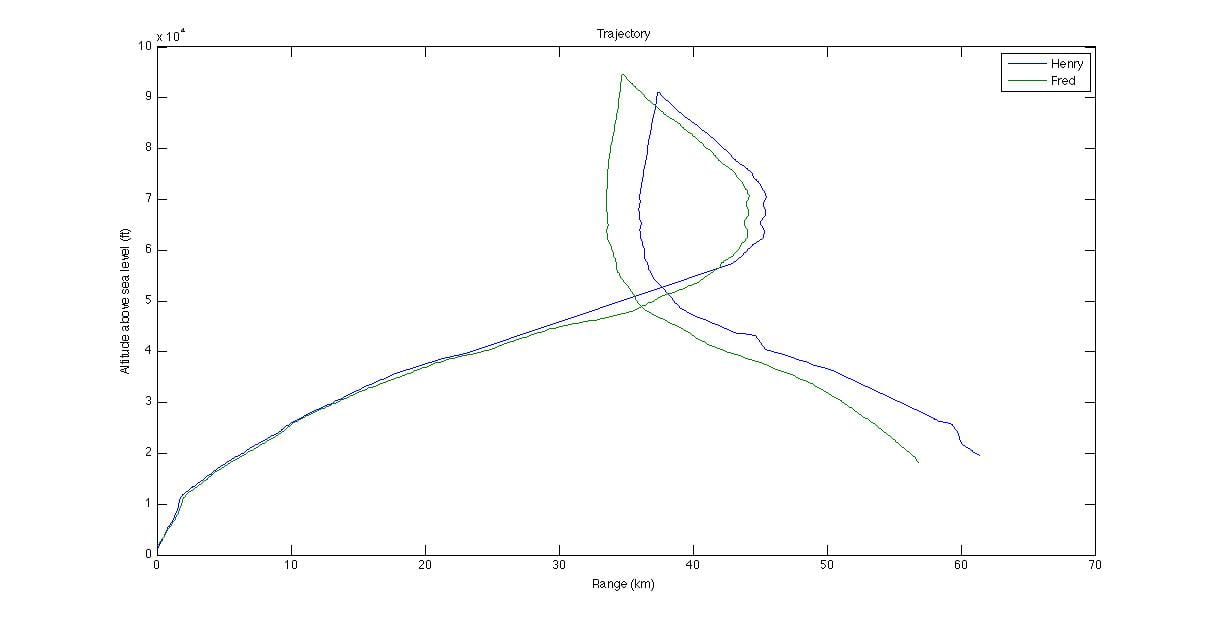 |
 |
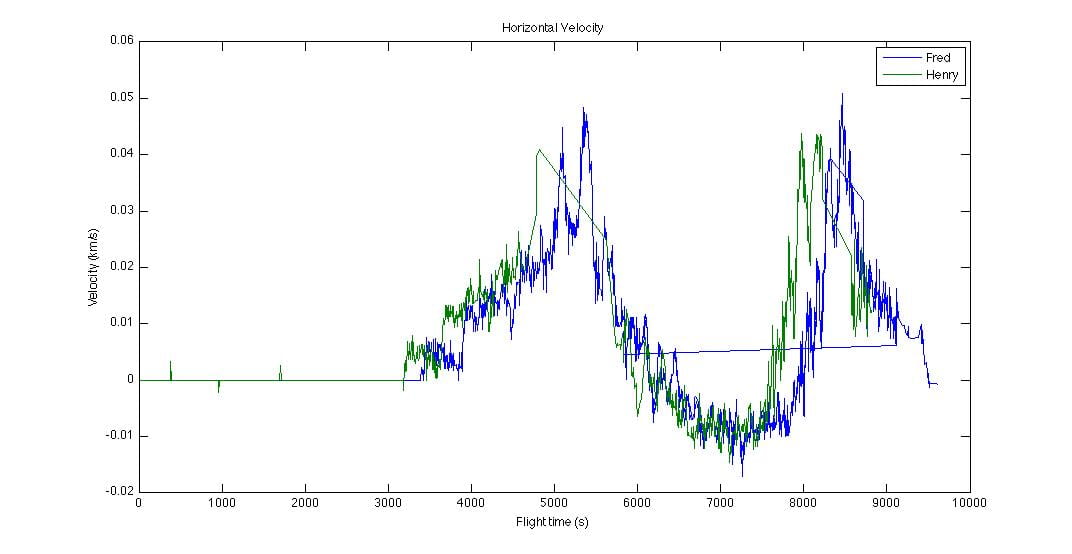 |
 |
 |
GreenCube 3 had its first launch on July 27, 2010! This mission included a test of our new telemetry system, an attempt to use the real-time GPS coordinates transmitted by our payload to track it with a telescope, and the addition of a de-spinning bar to our flight train, in addition to continuing the two-balloon science of our previous flight.
In order to evaluate the accuracy of our telescope tracking, we attached a CCD camera to the telescope and a bank of flashing LEDs to our secondary payload. The camera was able to record several minutes of continuous footage in which the LEDs were in view.
Due to several telemetry problems during this mission and our desire to perform another telescope tracking test, we hope to repeat this mission, except with a single balloon. The date for this launch is currently pending.
GreenCube 2
Slides from Colloquium- November 20, 2009
Green Cube 2 Data
Recovery team data, flight video, etc coming soon! Look here for a sample video clip.
Launch Team Thermistor Plots
These plots show the ambient temperature in degrees Celsius outside each payload. The data begins several minutes before launch and ends when the launch team loses radio contact with the payloads. Apogee for each balloon occurs at the peak around 80 minutes after launch. We hope to match temperature oscillations, like those of payload 1 starting around 35 minutes into flight, with GPS oscillations (see below) to provide evidence of possible gravity wave activity.
 |
 |
Launch Team GPS Plots
These graphs show the wind speed plotted against altitude for the upleg of both flights. The first graph shows the entire ascent and the others are 5km pieces of the first one.
 |
 |
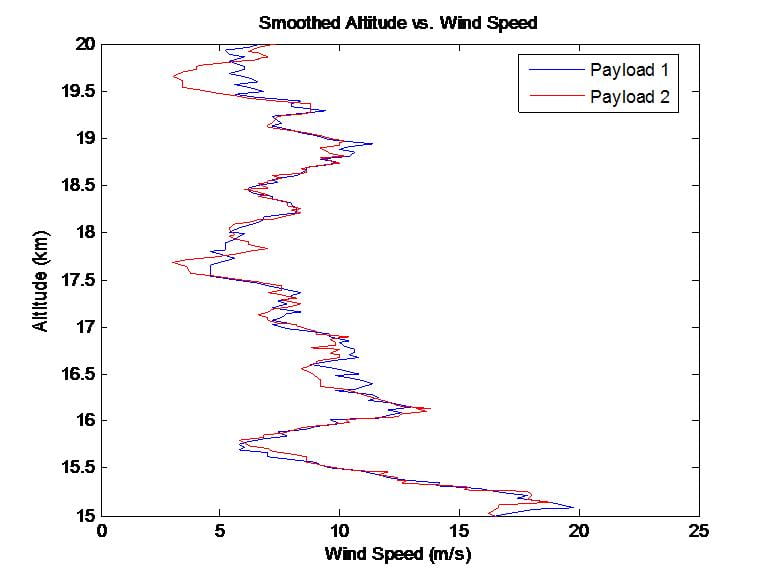 |
 |
 |
 |
In the winter and spring of 2009, the team investigated different scientific measurements that could be implemented using the balloon infrastructure the team had developed. Several of these ideas included testing sensorcraft communications with optical transmitting and receiving devices, using a photometer to measure ambient light, tracking balloon payloads using the doppler effect in the VLF radio spectrum, measuring stratospheric dust, and measuring the speed of sound at high altitudes, but the team eventually decided to investigate gravity waves using temperature and GPS measurements. GreenCube 2 differs from previous flights in its use of two balloons released successively instead of just one.
GreenCube 2 launched from Mt. Washington Regional Airport on August 25, 2009, and the team is now analyzing the data collected during flight.
GreenCube 1
GreenCube Closeout Report 2008
During the summer of 2008, the GreenCube team continued to push towards a full systems flight test, including the K111 board, six thermistors (as stand-ins for scientific instruments), and a magnetometer. At this point Parker Fagrelius had graduated, but the GreenCube team picked up another undergraduate Louis Buck. Furthermore, Phillip Bracikowski remained on the team now as a graduate student. Louis spent the summer debugging the K111 board and the six thermistors, and Phillip and Umair spent their time debugging the radio system so it would transmit the payload’s data. Also during the summer, undergraduate Claire Mckenna fabricated the external physical structure of the GreenCube and prepared it for its eventual launch date.
All this work was finally completed in the fall of 2008. At this point the GreenCube was prepared for launch. Also, two more undergraduates were added to the team: Julianna Scheiman and Max Fagin. Julianna worked on assembling all the pieces of the GreenCube so it was ready for launch, and Max developed and built an extremely effective directional antenna to help hone in on a locator beacon the GreenCube was emitting during flight and after touchdown. By October of 2008 the complete GreenCube prototype was ready for its full systems test, however the weather was not. Finally, on November 20th, 2008, about a year after the project began, the weather and winds were sufficient and the full-systems GreenCube was launched on a sounding balloon again from Newport, Vermont. The balloon ascended to an altitude of ~93,000 feet, flying across New Hampshire and landing just across the border of Maine.
The team learned a great deal from the test flight, specifically about data rates and data handling. Furthermore, since by then both the dummy GreenCube and the actual GreenCube both had been recovered the same day as flight, the team felt as if there is a pretty good chance of recovering future payloads.
 flight path from November 20th launch
flight path from November 20th launch
GreenCube 0
The first GreenCube campaign began in the fall of 2007. The program was originally spearheaded by then senior undergraduates Parker Fagrelius and Phillip Bracikowski. During this time, the basic structure of the GreenCube was developed, as well as its GPS, radio, and computer systems. Parker Fagrelius, with the help of engineer Kevin Rhoads, designed and built the K111 board, which is the main computer board managing all the scientific instrument and magnetometer data. Phillip Bracikowski researched and developed the GPS and radio systems. At this point it was decided that the GreenCube’s infrastructure should be tested on a 1 – 2 hour sounding balloon flight. Undergraduate Umair Siddiqui then joined the team to research and develop the flight systems such as the balloon and parachute. In June 2008, a prototype “dummy” GreenCube flew on a sounding balloon flight from Newport, Vermont. Though the dummy GreenCube only consisted of the GPS and radio systems, the flight successfully demonstrated the team’s ability to launch, track, and recover the payload in real time.

Here is a map of the balloon’s flight path.

